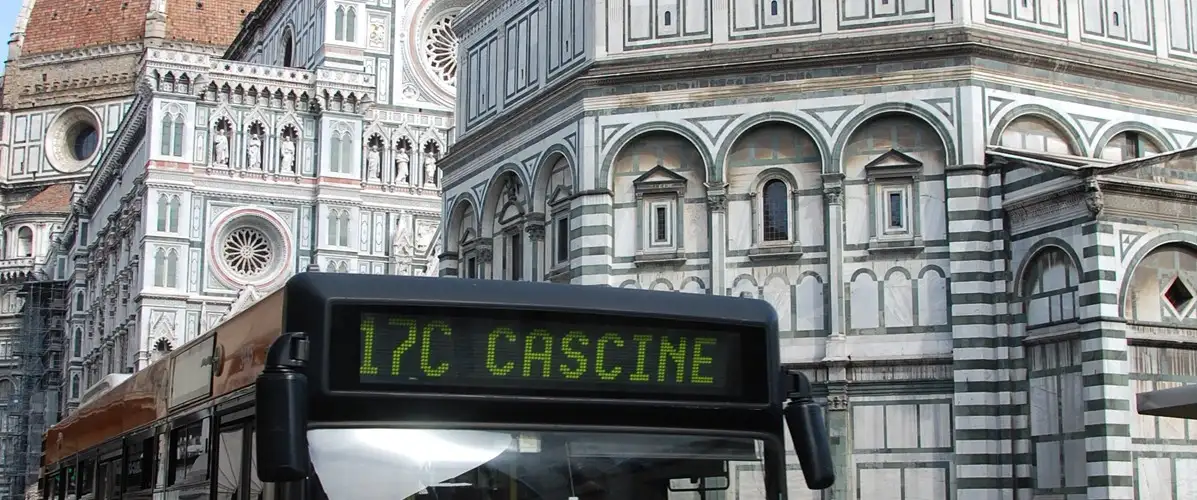
Europe’s public-transportation systems are so good that many urban Europeans go through life never learning to drive. Their wheels are trains, subways, trams, and buses (plus the occasional taxi). By riding with the locals, you too can take advantage of Europe’s convenient network of buses and rails.
Learning how to use the public-transportation system while traveling is a great way to save time and money. Instead of sitting in a taxi in Paris’ morning traffic, you can ride the Mètro to the Eiffel Tower, leaving all of that chaos overhead, and be among the first in line to climb to the top. In Verona, Italy, I recently saved several euros by catching the bus to my hotel from the train station, rather than taking a cab. And it didn’t even take much longer, since most cities coordinate their train and bus systems pretty efficiently.
In bigger European cities, the subway is often the quickest way to get around. Paris and London have the most extensive subway systems. In contrast, Rome, which has ancient ruins nearly everywhere you dig, has just two subway lines, and many areas are better served by bus.
But before you hop aboard, it helps to collect some information. Whenever you arrive in a new city, pick up a transit map. These are often available at the tourist office, subway ticket windows, your hotel, or on the Internet. To help you plot your travel, some transit systems (such as London’s) offer online journey planners, and many sights list the nearest bus or subway stop on their websites and brochures.
It’s also smart to find out what your ticket options are. Besides single tickets, many cities offer some sort of multi-ride or frequent rider ticket option. For instance, Paris’ carnet includes 10 tickets that you can use anytime and share with companions—and tickets cost about half a euro less than they would if you bought them individually.
Some cities offer passes that allow unlimited travel on all public transport for a set number of hours or days. London’s pay-as-you-go Oyster card, which works for the Tube, bus, and light rail, requires a refundable deposit for the card, but rides cost about half the price of individual tickets. When your balance gets low, simply “top up” at a ticket window or machine.
Buy tickets from automated ticket kiosks at stations, or get used to spending a lot of time in line. In some countries, such as Great Britain and France, American credit cards might not work at machines. But cash will, so bring along some coins and small bills, and you’ll be sailing through the system in no time.
Before getting on a subway, you’ll usually need to insert your ticket into a slot on the turnstile, then retrieve it (and keep it—you might need it to exit as well). On buses, you may need to validate the ticket by inserting it into an automated time-stamp box; or you may just have to show it to the driver. Observe and imitate what the locals do.
Buying tickets and boarding is half the battle. Figuring out where to get off can be just as challenging. Subway trains are equipped with maps detailing their route—track the different stops as you ride. An automated voice usually announces which stop is next, and you’ll also see the names of each station as you roll through. Usually these are posted prominently on the platform or along the wall. When the train stops, the doors generally open automatically, though you may have to open them yourself by pushing a button or pulling a lever.
Buses offer fewer cues for stops, so it’s even more important to stay alert. Have a sense of how long the trip is going to take. As you ride, follow along the route on your map, looking for landmarks along the way: monuments, bridges, major cross streets, and so on. Some buses pull over at every stop, while others only stop by request. If in doubt, look for a pull cord or a button with the local word for “stop.”
When riding on any public transportation, watch out for thieves. Per capita, there are more pickpockets on Europe’s subway trains and buses than just about anywhere else. They congregate wherever there are crowds or bottlenecks: on escalators, at turnstiles, or at the doors of packed buses or subway cars as people get on and off. Wearing a money belt is the best way to avoid having your pockets picked.
Despite occasional hassles and stress, using public transit is efficient and economical. And with the proper attitude, it can also be a cultural experience, plunging you into the people-filled river of European workaday life.
Rick Steves (www.ricksteves.com) writes European travel guidebooks and hosts travel shows on public television and public radio. Email him at rick@ricksteves.com and follow his blog on Facebook.
You Might Also Like:
We hand-pick everything we recommend and select items through testing and reviews. Some products are sent to us free of charge with no incentive to offer a favorable review. We offer our unbiased opinions and do not accept compensation to review products. All items are in stock and prices are accurate at the time of publication. If you buy something through our links, we may earn a commission.
Related
Top Fares From
Today's Top Travel Deals
Brought to you by ShermansTravel
Shop and Save with Country Inns...
Patricia Magaña
 Hotel & Lodging Deals
Hotel & Lodging Deals
$229 -- Chicago: Discounted Rates and...
Francesca Miele
 Hotel & Lodging Deals
$229+
Hotel & Lodging Deals
$229+
$188 -- Honolulu: Save on Oceanview...
Abigail Lamay
 Hotel & Lodging Deals
$188+
Hotel & Lodging Deals
$188+



